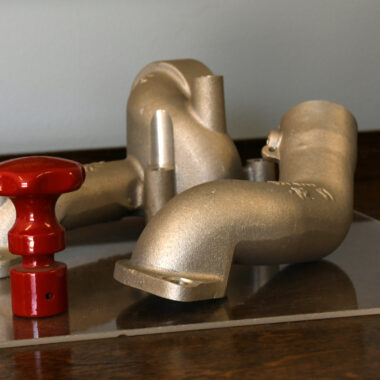Unlocking Excellence: Aluminum Casting Techniques & Tips for Superior Outcomes
Unlocking Excellence: Aluminum Casting Techniques & Tips for Superior Outcomes
Blog Article
Study the World of Light Weight Aluminum Casting: Recognizing the Various Techniques
Light weight aluminum casting is an essential procedure in the manufacturing industry, with numerous techniques utilized to develop precise and complex components. From the conventional sand spreading approach to the advanced die casting procedure, each approach offers distinct benefits depending on the needs of the task.
Sand Casting Technique
Sand casting, a widely-used method in aluminum spreading procedures, includes producing molds made of compacted sand for pouring liquified steel. When the mold is ready, it is securely positioned in a flask and molten light weight aluminum is poured right into the cavity.
After the metal has actually cooled down and solidified, the sand mold and mildew is damaged away to reveal the light weight aluminum spreading. Sand casting enables the manufacturing of intricate forms and huge parts that may be expensive or difficult to generate utilizing other approaches. It is likewise a sustainable technique as the sand can be reused and utilized multiple times, reducing waste in the spreading process.
Permanent Mold And Mildew Technique

One substantial benefit of the Irreversible Mold And Mildew Strategy is the enhanced dimensional accuracy it provides. The metal mold permits tighter resistances and better information in the final aluminum castings contrasted to sand spreading techniques. This precision makes it a favored choice for applications where tight dimensional control is crucial, such as in the aerospace and auto sectors.

Die Casting Process

Financial Investment Casting Strategy
Using a precision casting method, Investment Casting Approach entails producing complex aluminum components by putting molten steel into a ceramic mold and mildew. This procedure, likewise recognized as lost-wax spreading, begins with the development of a wax pattern of the desired component (aluminum casting).
The next action includes putting the molten aluminum into the ceramic mold and mildew. The light weight aluminum fills the tooth cavity left by the wax pattern, taking its shape exactly. This method is preferred for its ability to generate complex forms with high accuracy and a smooth surface coating. Investment spreading is frequently used for producing parts in markets where detailed styles and tight tolerances are called for, such as aerospace, auto, and medical tools. The flexibility and accuracy of the Financial investment Casting Method make it a valuable method in the world of aluminum spreading.
Lost Foam Spreading Method
Having checked find out here now out the complex accuracy of Financial investment Casting Strategy, the focus now shifts to the ingenious technique of Lost Foam Casting in aluminum component manufacturing. Lost Foam Casting, likewise understood as evaporative pattern casting, is a contemporary method where a foam pattern of the preferred component is produced and after that covered with a refractory material. The covered foam pattern is then buried in sand, and molten aluminum is put right into the mold and mildew. As the steel fills up the mold, the foam evaporates due to the heat, leaving a tidy dental caries in the form of the preferred component.
One of the major advantages of Lost Foam Casting is its capacity to generate complicated shapes with detailed details, typically in a single internet item without the requirement for added machining. This approach is additionally understood for its high dimensional accuracy and smooth surface area finish. In Addition, Lost Foam Spreading is a cost-efficient process as it reduces the demand for cores and permits the manufacturing of lightweight components. Despite its benefits, Lost Foam Casting needs careful control of the spreading process to make certain and stop defects high quality components.
Verdict
In conclusion, light weight aluminum casting uses a variety of approaches such as sand spreading, permanent mold strategy, pass away casting, investment casting, and shed foam spreading. Each approach has its own advantages and applications, making aluminum casting a versatile and widely made use of procedure in various markets. Understanding the differences between these approaches is essential in choosing one of the most suitable casting method for certain manufacturing needs.
Sand spreading, a widely-used approach in aluminum casting processes, involves creating molds made of compacted sand for putting liquified steel. aluminum casting.The Permanent Mold And Mildew Technique, like sand spreading, is an additional common approach used in light weight aluminum spreading procedures, supplying distinct advantages in terms of mold reusability and dimensional accuracy. The metal mold and mildew permits for tighter resistances and better information in the last light weight aluminum castings compared to sand casting methods. The 2 major kinds of die spreading are cold chamber die spreading and hot chamber pass away spreading, each ideal for different types of aluminum alloys.In final thought, aluminum spreading supplies a range of methods such as sand spreading, irreversible mold and mildew strategy, pass away spreading, investment casting, and shed foam casting
Report this page